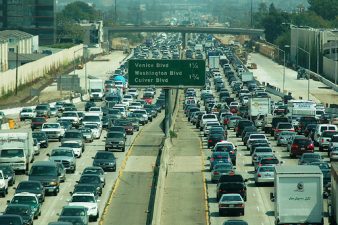 The Middle East can learn about energy savings from the Japanese, and the Japanese concept of setsuden.
The Middle East can learn about energy savings from the Japanese, and the Japanese concept of setsuden.
Sometime during the mid 1990s a series of heat waves coincided with a refueling shut-down at one of my home state’s nuclear power plants. Citizens were asked to voluntarily cut usage. Somehow we managed to conserve the equivalent of the nuclear power plant’s generating capacity. Now, one year after Japan’s earthquake and tsunami caused partial meltdowns at Fukushima Daiichi, fifty-four Japanese nuclear power plants have been shut down. How did the people of Japan make up for a 30% shortfall in their electric generating capacity?
Some coal and oil power plants were ramped up to help meet the demand, but even this wouldn’t have been enough. Setsuden, the Japanese word for “saving electricity”, was the key. In the year following the tsunami, Japanese citizens cut as much as 60 Gigawatts from their peak usage, roughly equivalent to the output of 75 nuclear reactors the size of the five which failed at Fukushima Daiichi. How did they do this?
Setsuden was in the Japanese vocabulary long before the 2011 tsunami. I first encountered a tankless water heater while visiting my cousin and her husband in the mountains of Japan. Here was a simple idea, heat only the water I use as it is used.
Why didn’t I think of that? Japan must import nearly all of its fossil fuels, so oil has always been expensive there. This gives Japan an advantage over the Mideast and US when it comes to thinking in terms of efficiency. Even during Japan’s property bubble, cities didn’t sprawl out quite as much as they did in other parts of the world.
 The tragic tsunami and nuclear disasters gave new focus to the importance of setsuden. The government started awareness campaigns and mandated that businesses which used more than 500 kilowatts must reduce their consumption by 15%.
The tragic tsunami and nuclear disasters gave new focus to the importance of setsuden. The government started awareness campaigns and mandated that businesses which used more than 500 kilowatts must reduce their consumption by 15%.
People switched to LED and CFL lights, the lights of Tokyo’s trendy Ginza were dimmed. Paper fans and shade took the place of air conditioners. People unplugged transformers and made sure appliances were off and not just on standby. Even the normally strict Japanese businessman dress code was relaxed to allow people to be more comfortable in workplaces even when air conditioners were set to a higher temperature.
When a tragedy of the magnitude of the 2011 earthquake and tsunami hits, it is impossible to fully understand the impact to people in the region and people in unaffected parts of Japan must have felt helpless to do anything for the victims. Setsuden was one way of uniting people towards a common goal and it was quite a success.
Setsuden prevented blackouts during the summer of 2011. There are no plans to make setsuden mandatory for 2012. This isn’t because capacity has been fully restored, it is because the people of Japan have learned new habits. If the rest of the world looks carefully, we can learn from this success story.
If it’s possible for an efficient society to cut their electricity consumption by 30%, imagine what is possible in other parts of the world, if only we set our minds to it.
Above image by Tokyo Tom Baker
Lower image remix by Brian Nitz via openclipart.org


